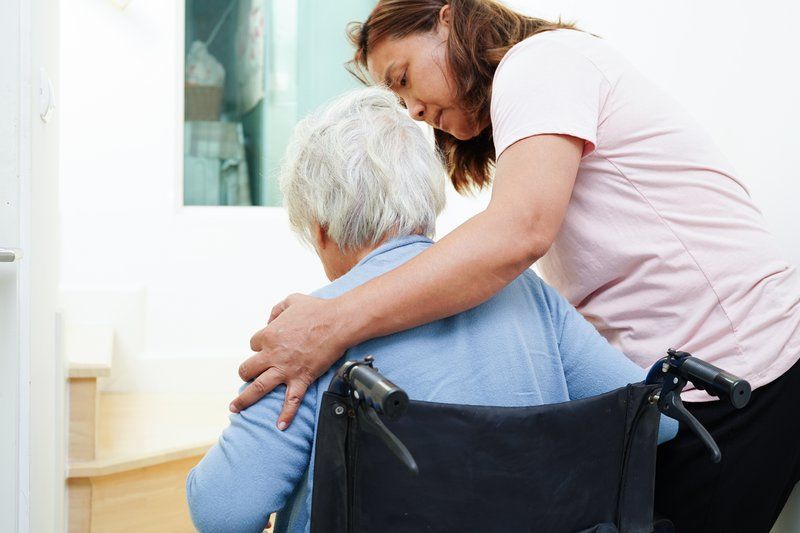BLOG
Fall Prevention for Seniors: Creating a Safe and Hazard-Free Environment
Falls are a leading cause of injury among older adults, often resulting in serious consequences such as fractures and hospitalizations. According to the Centers for Disease Control and Prevention (CDC), more than one in four people aged 65 years or older fall each year, and one out of five falls causes an injury such as a broken bone or head injury. These incidents not only impact the physical health of seniors but also their independence and quality of life.
Creating a safe and hazard-free environment is crucial in reducing the risk of falls among seniors. Assisted living communities are vital in implementing effective fall prevention strategies tailored to their residents’ needs. By understanding the risk factors and adopting comprehensive safety measures, these communities can significantly enhance the well-being of older adults. The following sections delve into key aspects of fall prevention for seniors, emphasizing the importance of a proactive and inclusive approach.
Understanding the Risk Factors of Falls
Identifying and addressing the risk factors of falls is the first step in prevention. Age-related changes such as decreased muscle strength, balance issues, and vision impairments contribute significantly to the likelihood of falling. Chronic conditions like arthritis, diabetes, and neurological disorders further exacerbate these risks. Medications that cause dizziness or drowsiness can also increase fall susceptibility.
Environmental hazards within the living space, such as loose rugs, poor lighting, and cluttered pathways, are common contributors to falls. In assisted living facilities, regular assessments help identify and mitigate these hazards. Implementing non-slip flooring and ensuring adequate lighting are standard practices. Grab bars and handrails in key areas also provide additional support.
Behavioral factors, including fear of falling, can lead to reduced physical activity, resulting in further decline in strength and balance. Encouraging regular exercise and mobility can help break this cycle. Assisted living communities often offer fitness programs designed to improve balance and coordination, which can accommodate residents with varying abilities.
Nutritional deficiencies, particularly vitamin D and calcium, can weaken bones and increase fracture risk. Assisted living facilities provide balanced meals to ensure residents receive essential nutrients. Regular health check-ups monitor for deficiencies and address them promptly.
Footwear choices also play a significant role in fall prevention. Shoes with non-slip soles and proper support can enhance stability. Assisted living staff guide residents in selecting appropriate footwear. Regular foot care may also prevent issues that could affect mobility.
Promoting Physical Activity and Balance for Better Fall Prevention
Regular physical activity is essential for maintaining strength, balance, and coordination, which is critical for fall prevention. Assisted living communities offer exercise programs tailored to the abilities of their residents. These programs may include activities such as tai chi, yoga, and strength training. Participation helps enhance physical health and confidence.

Balance training exercises specifically target stability. These exercises help residents improve their ability to recover from potential trips or slips. Group classes provide social interaction, which can motivate continued participation. Individualized programs are also available for residents with specific needs.
Physical therapists help develop and oversee exercise regimens. They assess residents' mobility levels and tailor programs accordingly. Monitoring progress is necessary for adjusting exercises to match improvements or address challenges.
Encouraging daily movement beyond structured exercise sessions is also important. Residents engage in activities such as walking, gardening, or participating in recreational events. These activities contribute to overall physical health and reduce sedentary behavior. Staff support residents in integrating movement into their daily routines.
Residents and their families receive education on the benefits of physical activity. Understanding the link between activity and fall prevention empowers seniors to stay engaged. Knowledge supports confidence, and confidence reduces fear of falling. Education is also key for caregivers and families, who learn to reinforce safe habits. A shared understanding leads to a stronger, safer community for all residents.
Monitoring Health and Managing Medications
Comprehensive fall prevention includes careful monitoring of residents’ health conditions. Chronic illnesses such as diabetes, arthritis, or cardiovascular issues can affect balance and mobility. Regular medical evaluations allow early detection of new risks or changes in health status. These evaluations guide personalized care plans that reduce the chance of falls.

Medication management is equally essential in preventing falls. Certain drugs can cause dizziness, drowsiness, or low blood pressure. Assisted living facilities monitor prescriptions to ensure combinations don’t increase fall risks.
Staff coordinate closely with physicians and pharmacists to avoid interactions that could impair cognition or balance. Medication reviews are routine, especially after hospital stays or prescription changes. The timing of dosage is monitored to limit side effects during active hours, which is paramount to reducing falls.
Vision and hearing assessments are part of routine care to address sensory impairments. Poor vision can make hazards harder to see, while hearing loss can impact awareness of one’s surroundings. Corrective lenses and hearing aids are kept clean and updated. Proper sensory support helps seniors maintain stability and react to environmental cues.
Monitoring sleep quality and hydration levels as part of overall wellness is critical to serving our older adults. Fatigue and dehydration can lower alertness and physical coordination. Staff help residents maintain healthy sleep routines and encourage regular fluid intake. These small lifestyle details have a large impact on fall risk reduction.
Partner with Experts in Fall Prevention for Seniors
Reducing fall risks is a cornerstone of quality care in assisted living. Safety measures must be proactive, personalized, and consistently applied. Seniors benefit from environments that address physical, medical, and social factors influencing fall risk. Thoughtful design, daily support, and education all work together to protect residents.
At Assured Senior Living, fall prevention for seniors is in every aspect of care. Our communities are designed for safety, staffed by trained professionals, and committed to health monitoring. We offer personalized care plans, physical activity programs, and ongoing risk assessments. Learn how we create secure environments where older adults can thrive with confidence.















